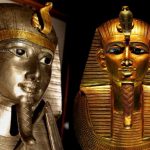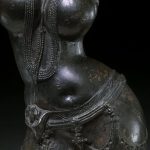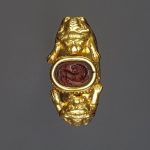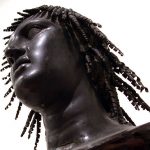Statue of Ramses II – Luxor Temple
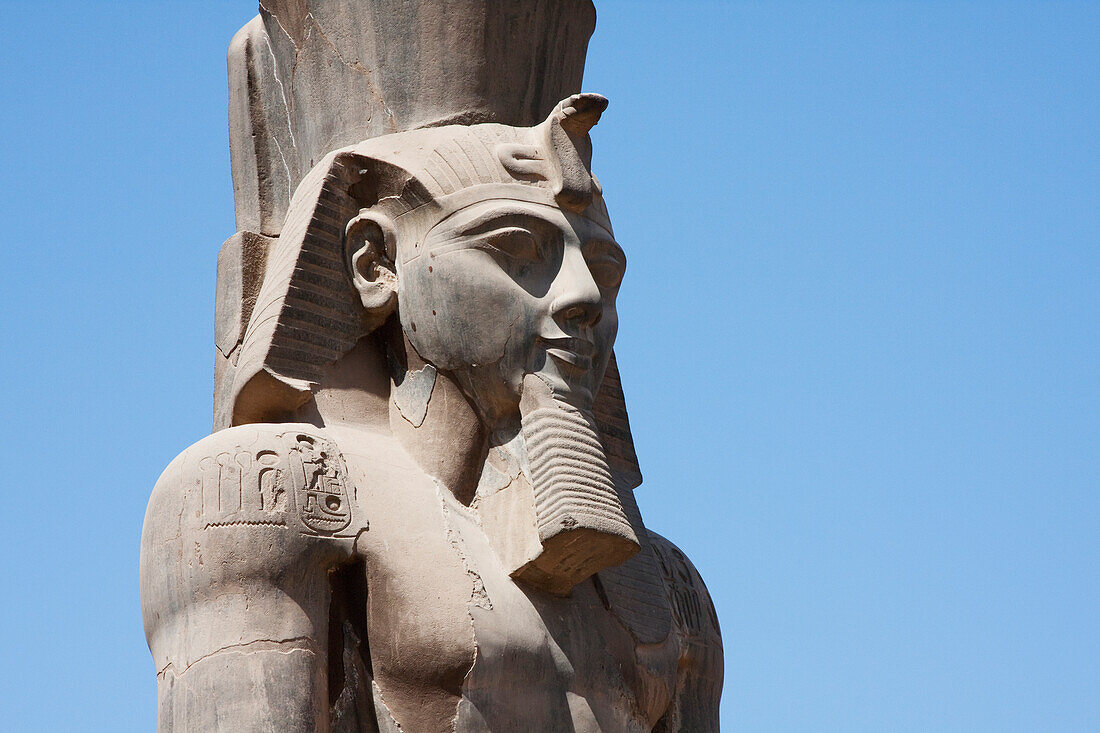
The colossal statue of Ramses II at the entrance of the Luxor Temple originally formed part of a grand display before the temple’s first pylon, constructed during the New Kingdom. This enormous figure, carved from pink or black granite, stands between 11 to 12 meters tall and weighs between 60 and 82 tonnes, depending on sources.
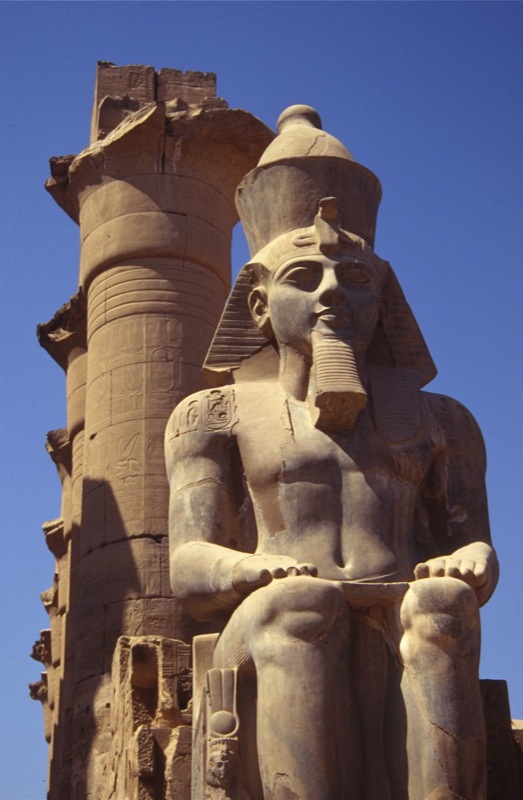
Discovered in fragments (45–58 pieces) during excavations between 1958 and 1960, the statue lay in disrepair until a restoration initiative began in the mid-2010s. Completed restoration allowed the statue to be re-erected at the temple’s entrance in 2017 or 2019, accompanied by a ceremonial unveiling.
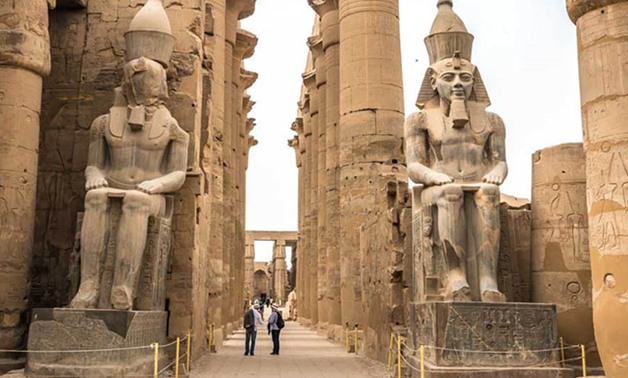
This imposing figure depicts Ramses II in a commanding pose—often with his left foot stepping forward—exuding both regal authority and divine stature. He wears the double crown of Upper and Lower Egypt, affirming his rule over unified lands, and other royal symbols such as the uraeus (cobra) and the ankh are carved with precision, emphasizing his kingly and divine legitimacy.

Scholars interpret the statue not only as an image of royal power, but also as a cult—or “Ka”—statue, embodying Ramses II’s divine essence. The foremost gate of Luxor Temple, with its colossus guardians, integrates the pharaoh into ritual and religious functions, particularly during festivals like the Opet procession.
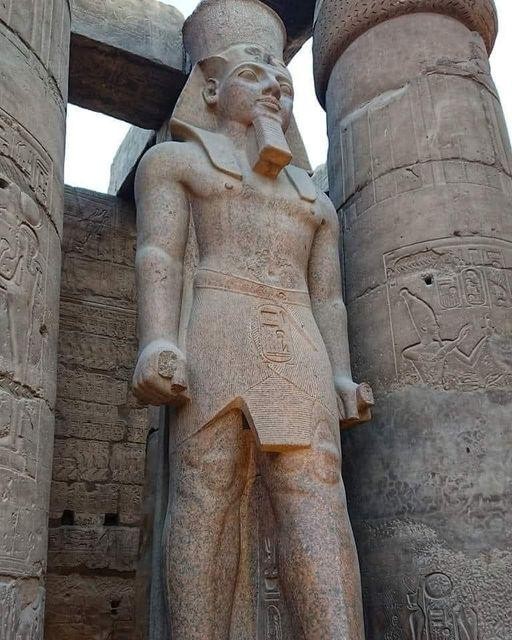
Moreover, the statue is part of a larger ensemble. Originally, six statues flanked the first pylon—two seated and four standing—though only a few have survived or been restored to their original positions today.
